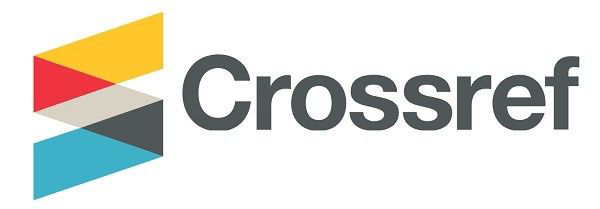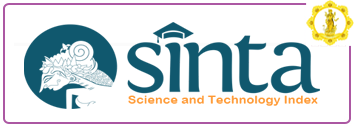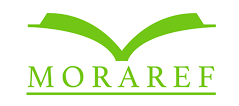MGA Kwento NG Guro At Kwentong Mag-Aaral: Student Assessment Processes, Challenges And Solutions In The New Normal Setup Leading To Quality Assurance Inputs
DOI:
https://doi.org/10.25078/jpm.v7i2.2351Keywords:
Quality Assurance, Student Assessment, Distance LearningAbstract
This qualitative research study used narrative approach to retell the narratives of twelve (12) high school teachers on the processes, challenges, and solutions of student assessment. The investigation identifies that teachers assess the students by utilizing modules and other activities as alternatives of face-to-face instruction and assessment, using rubrics and providing feedbacks, utilizing online platforms, and involving parents. The participants also encountered challenges such as academic dishonesty, students’ attitude towards learning tasks, and lack of ICT resources. These are solved by communicating with parents, feedbacking, and alternatives means of distributing learning tasks. The findings provide insights specifically for teachers who struggle in assessing student learning in the New Normal Setup and who aim to use distance learning even in the post-pandemic class setting; and contribute inputs to quality assurance in education, considering the pandemic-impacted educational landscape
Downloads
References
Ancho, I. (2020). Teaching Korean as a foreign language: Inputs to new normal pedagogy. Creative Practices in Language Learning and Teaching, 8(2), 27-38. Retrieved from https://cplt.uitm.edu.my/v1/images/v8n2/Article3.pdf
Akhtar, M. (2007). A comparative study of student attitude, learning and teaching practices in Pakistan and Britain. Educational Studies, 33(3), 267–283. doi:10.1080/03055690701423069
Almario, A.R., & Austria, R. (2020). Helping K-12 transition to post-COVID 19 times. Retrieved from https://authdocs.deped.gov.ph/wpcontent/uploads/2020/06/BE-LCP-Annex-E-Ani-AlmarioHelping-K-12-Schools-Transition-to-Post-COVID.pdf
Andersen, V. N., Dahlerâ€Larsen, P., & Pedersen, C. S. (2009). Quality assurance and evaluation in Denmark. Journal of Education Policy, 24(2), 135–147. doi:10.1080/02680930902733071
Andrade, H. & Du, Y. (2005). Student perspectives on rubric-referenced assessment. Practical Assessment, Research, and Evaluation 10 (3). https://doi.org/10.7275/g367-ye94
Cheong Cheng, Y. (2003). Quality assurance in education: internal, interface, and future. Quality Assurance in Education, 11(4), 202–213. doi:10.1108/09684880310501386
Chung Sea Law, D. (2010). Quality assurance in postâ€secondary education. Quality Assurance in Education, 18(1), 64–77. doi:10.1108/09684881011016007
Creswell, J. (2012). Educational research: Planning, conducting, and evaluating quantitative and qualitative research. Boston, USA: Pearson Education, Inc.
Davis, S. F., Grover, C. A., Becker, A. H., & McGregor, L. N. (1992). Academic Dishonesty: Prevalence, Determinants, Techniques, and Punishments. Teaching of Psychology, 19(1), 16–20. doi:10.1207/s15328023top1901_3
Edgren, S., & Walters, S. (2006). Distance Learning Exchange: Academic Dishonesty in the 21stCentury. The Journal of Continuing Higher Education, 54(2), 56–59. doi:10.1080/07377366.2006.10400101
European Commission. (n.d.). Why is quality assurance in school education important? Accessed 22 April 2021. Retrieved from https://ec.europa.eu/education/policies/school/quality-assurance_en
Evans, C., & Bunescu, L. (2020). Student assessment: Thematic peer group report. European University Association. Retrieved from https://eua.eu/downloads/publications/eua%20report%20student%20assessment_web.pdf
Fraenkel, J., & Wallen, N. (2009). How to design and evaluate research in education. New York, USA: McGraw-Hill Companies, Inc.
Goodall, J., & Montgomery, C. (2013). Parental involvement to parental engagement: a continuum. Educational Review, 66(4), 399–410. doi:10.1080/00131911.2013.781576
Joseph, M., & Joseph, B. (1997). Service quality in education: a student perspective. Quality Assurance in Education, 5(1), 15–21. doi:10.1108/09684889710156549
Kirkwood, A., & Price, L. (2008). Assessment and student learning: a fundamental relationship and the role of information and communication technologies. Open Learning: The Journal of Open, Distance and e-Learning, 23(1), 5–16. doi:10.1080/02680510701815160
Murnane, R. J., Sharkey, N. S., & Boudett, K. P. (2005). Using Student-Assessment Results to Improve Instruction: Lessons From a Workshop. Journal of Education for Students Placed at Risk (JESPAR), 10(3), 269–280. doi:10.1207/s15327671espr1003_3
National Center on Educational Outcomes. (2020). Five formative assessment strategies to improve distance learning outcomes for students with disabilities. Retrieved from https://nceo.umn.edu/docs/OnlinePubs/NCEOBrief20.pdf
Organization for Economic Co-operation and Development. (2015). The role of education and skills in today’s world. Retrieved from https://www.oecd-ilibrary.org/docserver/9789264226159-4-en.pdf?expires=1619110343&id=id&accname=guest&checksum=BDA45FB25CC55651174E1478C9F6CE63
OECD. (n.d.). What are the goals of the PISA for Schools project? Accessed April 22, 2020. Retrieved from https://www.oecd.org/pisa/aboutpisa/pisa-based-test-for-schools-faq.htm#:~:text=The%20PISA%20for%20Schools%20project%20aims%20to%3A,and%20the%20world%20of%20work.
Pat-El, R., Tillema, H., & van Koppen, S. W. M. (2012). Effects of formative feedback on intrinsic motivation: Examining ethnic differences. Learning and Individual Differences, 22(4), 449–454. doi:10.1016/j.lindif.2012.04.001
Philippine Department of Education. (2021). Guidelines on the evaluation of self-learning modules for quarter 3 and 4 for school year 2020-2021. (DepEd Order No. 001). Department of Education Official Website. Retrieved from https://www.deped.gov.ph/wp-content/uploads/2021/01/DO_s2021_001.pdf
Philippine Department of Education. (2020). Interim guidelines for assessment and grading in the light of the basic education learning continuity plan. (DepEd Order No. 31). Department of Education Official Website. Retrieved from https://www.deped.gov.ph/wp-content/uploads/2020/10/DO_s2020_031.pdf
Philippine Government. Department of Education. (2020). DepEd prepares self-learning modules for education’s new normal. Department of Education Official Website. Retrieved from https://www.deped.gov.ph/2020/07/02/deped-prepares-self-learning-modules-for-educations-new-normal/
Reju, C. O., & Jita, L. C. (2020). A comparative investigation of assessment practices in distance and online learning undergraduate mathematics in Nigeria. Journal of Educational Research and Practice, 10, 90–103. https://doi.org/10.5590/JERAP.2020.10.1.06
Russell, M. & Airasan, P. (2012). Classroom assessment: Concepts and applications. New York, USA: McGraw-Hill Companies.
Schartel, S. A. (2012). Giving feedback – An integral part of education. Best Practice & Research Clinical Anaesthesiology, 26(1), 77–87. doi:10.1016/j.bpa.2012.02.003
Shermis, M. & Di Vests, F. (2011). Classroom assessment in action. Plymouth, UK: Rowman & Littlefield Publishers, Inc.
Stella, A., & Gnanam, A. (2004). Quality assurance in distance education: The challenges to be addressed. Higher Education, 47(2), 143–160. doi:10.1023/b:high.0000016420.17251.5c
Tee Ng, P. (2008). The phases and paradoxes of educational quality assurance. Quality Assurance in Education, 16(2), 112–125. doi:10.1108/09684880810868402
Van Brakel, P. A., & Chisenga, J. (2003). Impact of ICTâ€based distance learning: the African story. The Electronic Library, 21(5), 476–486. doi:10.1108/02640470310499867









